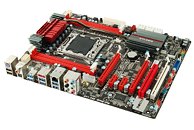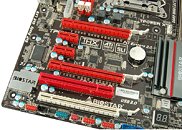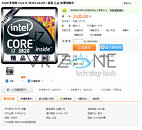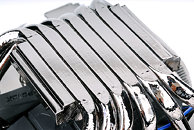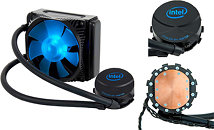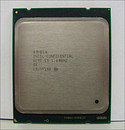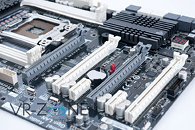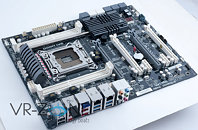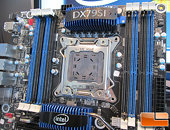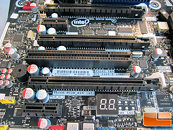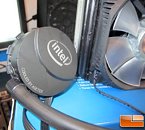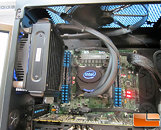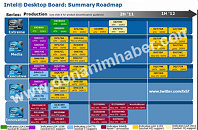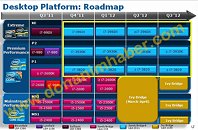
Biostar TPower Makes a Comeback with TPower X79, Geared for Extreme Overclocking
Biostar's coveted TPower brand makes a comeback with TPower X79, Biostar's premium overclocking motherboard for the Core i7 "Sandy Bridge-E" platform. TPower motherboards have been known to be a part of some record-setting CPU OC feats right from the days of LGA775. The TPower X79 is another product that's meant for record-setting feats, with its strong VRM and slim feature-set that does away with everything overclockers don't need and adds to the bloat of the motherboard.
The CPU is powered by an 8-phase DuraMax VRM with active phase control and direct FETs. It draws power from two 8-pin EPS connectors, apart from the 24-pin ATX and an optional 4-pin Molex for PCIe slot stability. Apart from a strong VRM, the board makes use of POSCAP capacitors in the CPU area, and a high-quality clock generator. The VRM and chipset heatsinks are connected with a 6 mm heat pipe, the heatsinks are made of a ceramic surface material for better dissipation. The CPU is wired to just four DDR3 DIMM slots, one per channel, which shouldn't be an issue for overclockers. It gives you shorter memory traces. Apart from JEDEC speeds of up to DDR3-1600 MHz, the board supports DDR3-2400 MHz by overclocking.
The CPU is powered by an 8-phase DuraMax VRM with active phase control and direct FETs. It draws power from two 8-pin EPS connectors, apart from the 24-pin ATX and an optional 4-pin Molex for PCIe slot stability. Apart from a strong VRM, the board makes use of POSCAP capacitors in the CPU area, and a high-quality clock generator. The VRM and chipset heatsinks are connected with a 6 mm heat pipe, the heatsinks are made of a ceramic surface material for better dissipation. The CPU is wired to just four DDR3 DIMM slots, one per channel, which shouldn't be an issue for overclockers. It gives you shorter memory traces. Apart from JEDEC speeds of up to DDR3-1600 MHz, the board supports DDR3-2400 MHz by overclocking.
